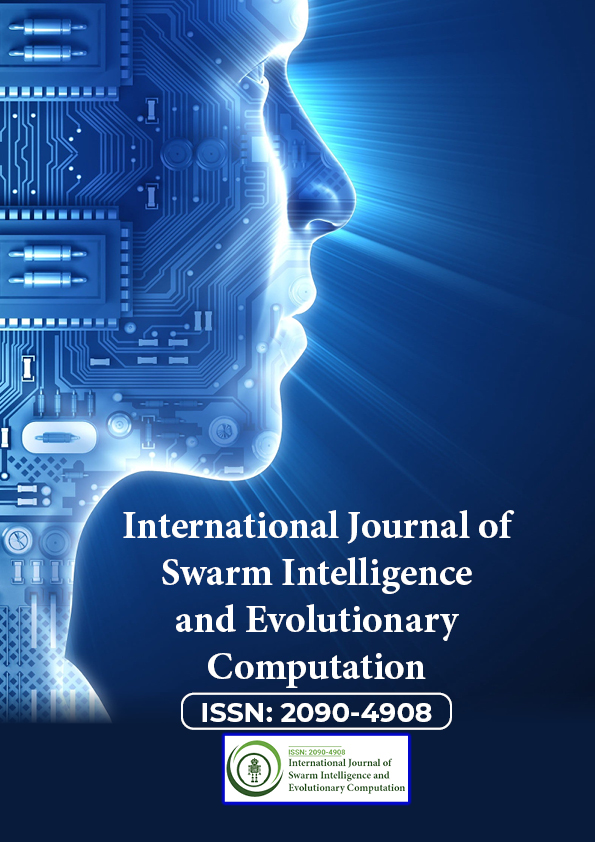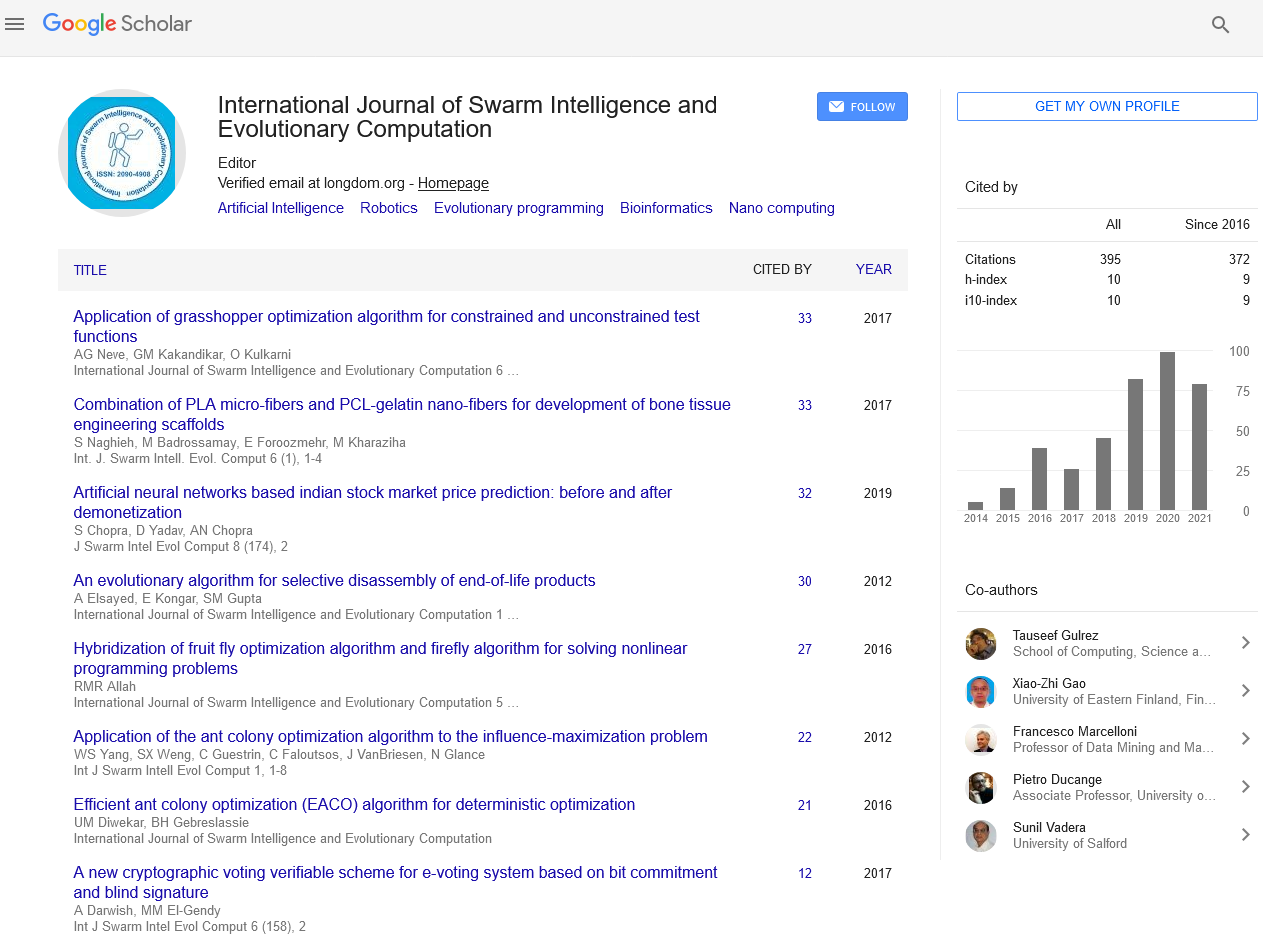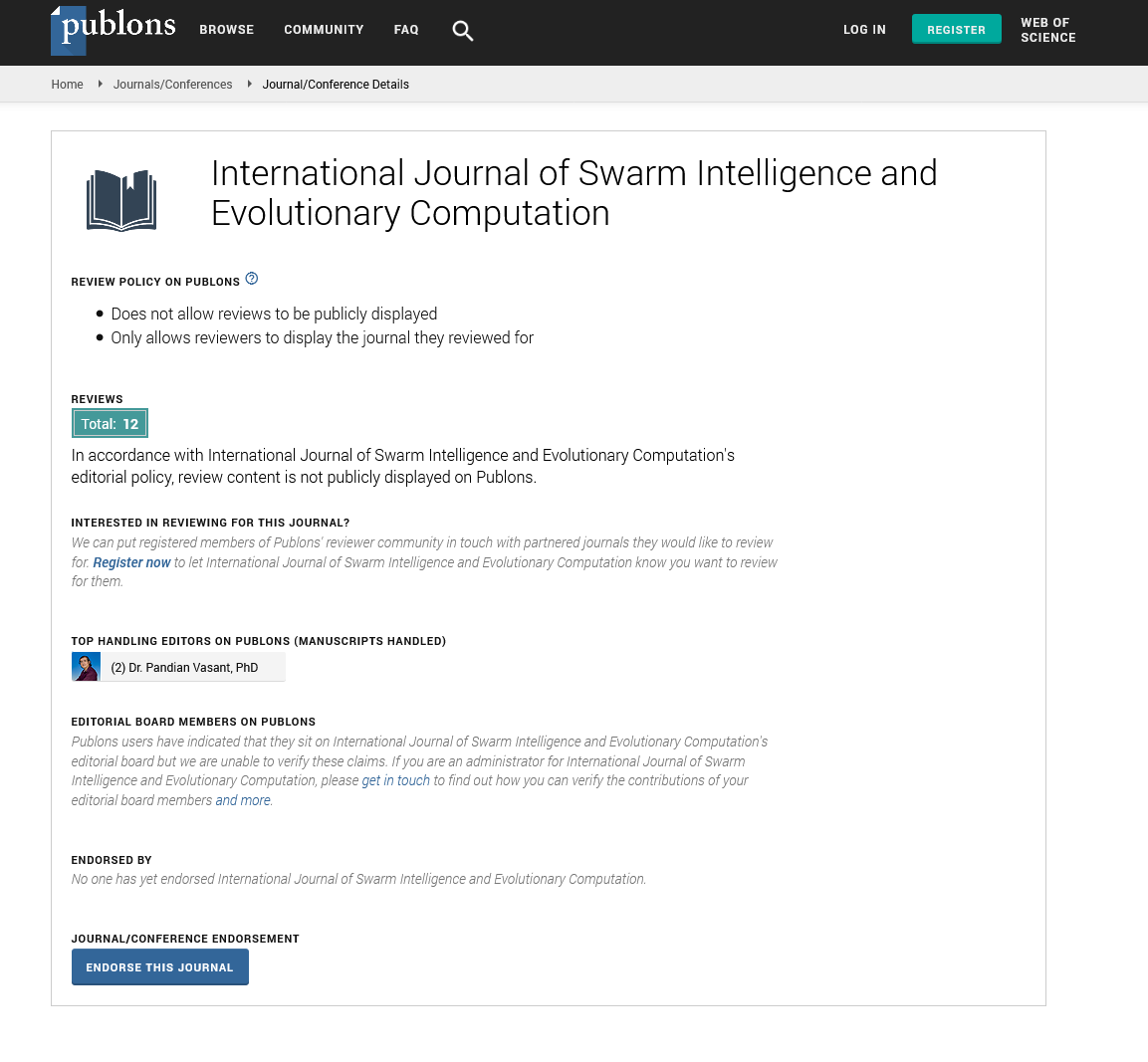Indexed In
- Genamics JournalSeek
- RefSeek
- Hamdard University
- EBSCO A-Z
- OCLC- WorldCat
- Publons
- Euro Pub
- Google Scholar
Useful Links
Share This Page
Journal Flyer

Open Access Journals
- Agri and Aquaculture
- Biochemistry
- Bioinformatics & Systems Biology
- Business & Management
- Chemistry
- Clinical Sciences
- Engineering
- Food & Nutrition
- General Science
- Genetics & Molecular Biology
- Immunology & Microbiology
- Medical Sciences
- Neuroscience & Psychology
- Nursing & Health Care
- Pharmaceutical Sciences
Opinion Article - (2023) Volume 12, Issue 6
Intelligent Fault Detection: Enhancing Systems Reliability through AI
Imran Haul*Received: 23-Oct-2023, Manuscript No. SIEC-23-24073; Editor assigned: 25-Oct-2023, Pre QC No. SIEC-23-24073 (PQ); Reviewed: 08-Nov-2023, QC No. SIEC-23-24073; Revised: 15-Nov-2023, Manuscript No. SIEC-23-24073 (R); Published: 24-Nov-2023, DOI: 10.35248/2090-5008.23.12.344
Description
The pursuit of systems reliability and operational efficiency across industries has spurred the development of intelligent fault detection mechanisms. Traditionally, fault detection involved manual inspection and rule-based methods, but the advent of artificial intelligence (AI) has revolutionized this field. Leveraging machine learning, data analytics, and advanced algorithms, intelligent fault detection systems autonomously identify anomalies, deviations, and faults in complex systems.
Historically, fault detection relied on rule-based systems and periodic human inspections. These methods lacked adaptability to changing system behaviors and often missed subtle or complex faults, leading to potential downtimes and safety hazards.
Intelligent fault detection systems harness the capabilities of AI algorithms such as machine learning, neural networks, and statistical analysis. They learn from historical data patterns, identifying deviations from normal operation, and continuously adapt their models to evolving system behaviors.
Core elements of intelligent fault detection
Machine learning models: Supervised, unsupervised, and semisupervised machine learning models form the backbone of intelligent fault detection systems. These models ingest large volumes of data, learning normal system behaviors and recognizing anomalies or deviations that may indicate faults.
Feature engineering: Feature engineering involves extracting and selecting relevant features or variables from raw data to train fault detection models. It aims to capture essential information that characterizes normal and faulty system behaviors effectively.
Anomaly detection algorithms: Anomaly detection algorithms, including clustering, isolation forests, and auto encoders, are employed to detect outliers or anomalies in system data. These algorithms flag data points that significantly differ from the learned normal patterns.
Applications of intelligent fault detection
Manufacturing and industry: In manufacturing, AI-powered fault detection systems monitor machinery, detecting anomalies in equipment performance or product quality. This proactive approach helps prevent breakdowns, reduce downtime, and enhance product quality.
Energy and utilities: In energy systems, intelligent fault detection ensures the early identification of irregularities in power grids or renewable energy systems. This enables timely interventions to prevent system failures and optimize energy distribution.
Transportation and automotive: In transportation, AI-based fault detection is crucial for ensuring the safety and reliability of vehicles and transport systems. It monitors vehicle components, detecting potential faults in engines, brakes, or sensors to prevent accidents.
Advantages
Proactive maintenance: Early fault detection allows for proactive maintenance, reducing downtime and preventing catastrophic failures.
Increased efficiency: Improved system reliability leads to enhanced operational efficiency and cost savings.
Data-driven insights: Fault detection systems generate valuable insights from data, aiding in better decision-making and system optimization.
Challenges
Data quality and quantity: Availability of high-quality data and sufficient labeled examples for training are crucial for effective fault detection.
Model interpretability: Complex AI models may lack interpretability, making it challenging to understand how and why a fault was detected.
Real-time implementation: Achieving real-time fault detection in dynamic systems poses computational and latency challenges.
Future directions
The future of intelligent fault detection lies in the refinement of AI models for increased accuracy, interpretability, and scalability. Integration with IoT devices and edge computing will enable real-time fault detection in dynamic environments. Additionally, addressing ethical considerations, such as ensuring transparency in decision-making, will be pivotal for widespread adoption.
Conclusion
Intelligent fault detection systems powered by AI mark a significant advancement in ensuring the reliability, safety, and efficiency of complex systems across industries. By leveraging machine learning and advanced algorithms, these systems detect anomalies, predict faults, and enable proactive interventions, reducing downtime and enhancing overall system performance. As technology continues to evolve, the integration of AI-driven fault detection will play a crucial role in fostering resilient and optimized systems in our increasingly interconnected world.
Citation: Haul I (2023) Intelligent Fault Detection: Enhancing Systems Reliability through AI. Int J Swarm Evol Comput. 12:344.
Copyright: © 2023 Haul I. This is an open-access article distributed under the terms of the Creative Commons Attribution License, which permits unrestricted use, distribution, and reproduction in any medium, provided the original author and source are credited.


